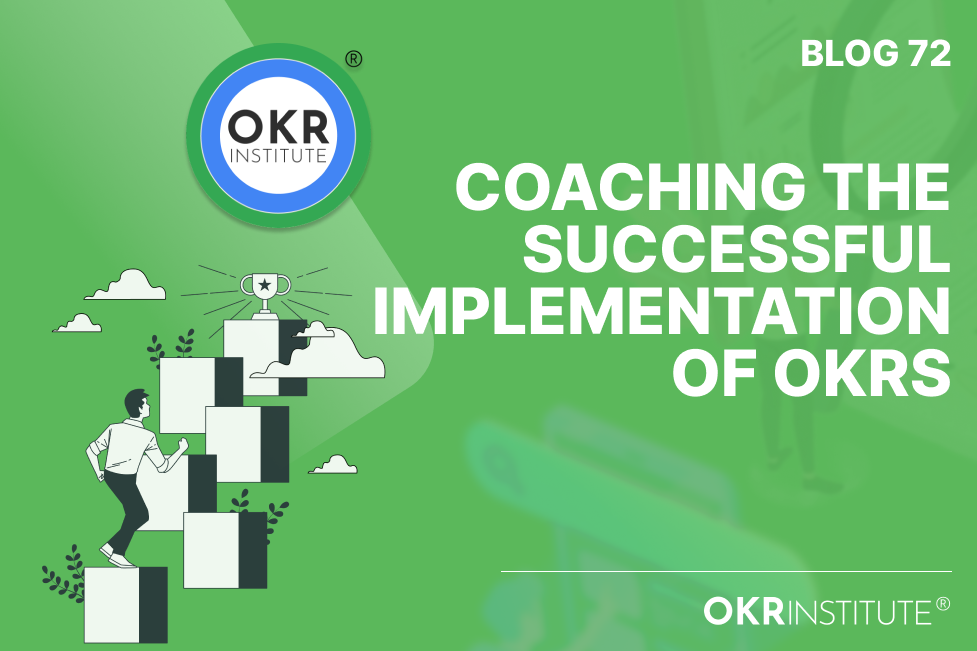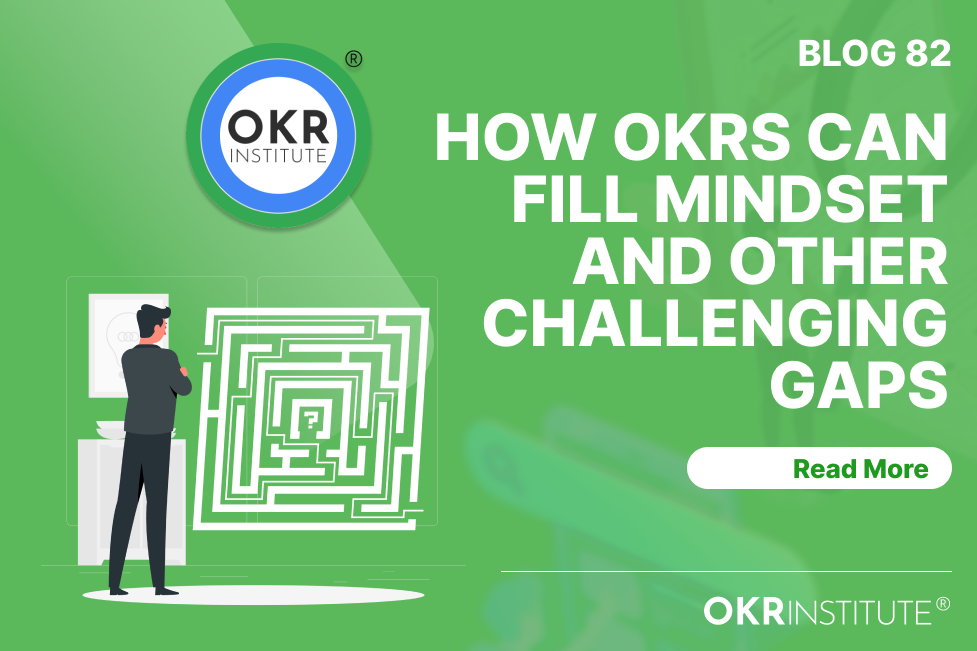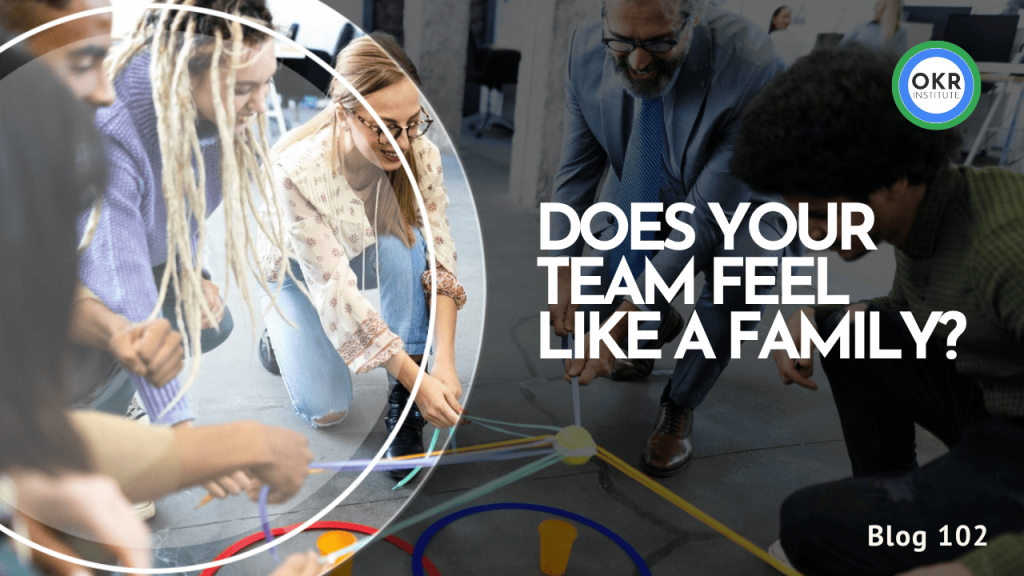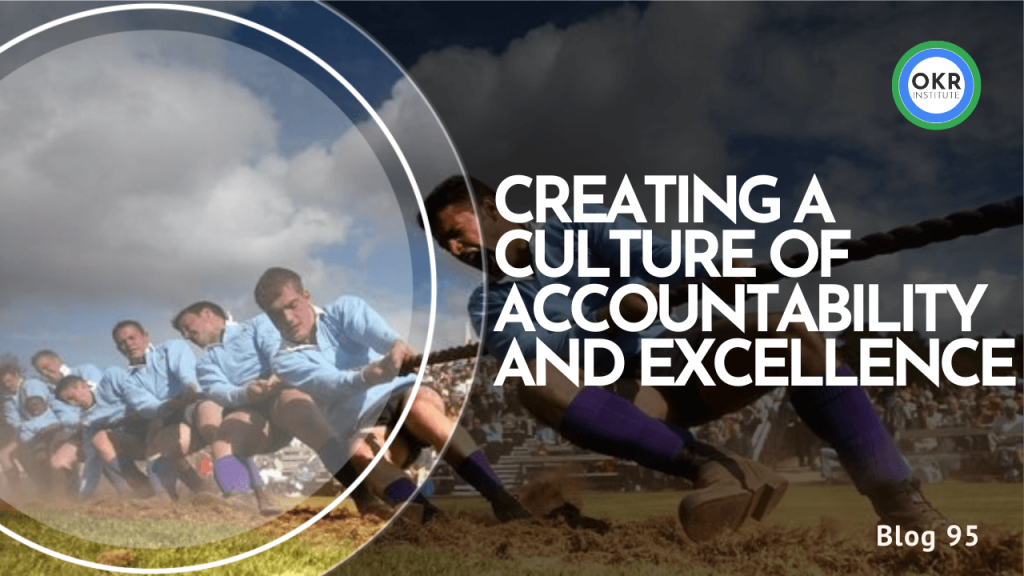CoachIng the Succesful Implementation of OKRs

Coaching the succesful implementation of OKRs
At first glance, the implementation of OKRs might seem simple – After all, all you need to do is write objective statements, define supporting key results, and execute an action plan. There are, however, a few layers of complexity to consider when it comes to the sustainability and success of OKRs:
- Alignment
- Resources capacity
- The impact of the organizations’ culture
- Resistance to change
At the OKR Institute, we have had the privilege of Coaching over five hundred organizations in more than fifty different countries, empowering us to share best practices learnt from our experience.
How we coach and communicate during the deployment of OKRs largely determines how successful we will be in the long run.
Coaching is about relevant communication and modelling
A best practice to consider that is related to communication around OKRs is to come prepared for OKR meetings with great questions over being prepared with what to say. It is natural to have the desire to impress and motivate people with excellent speeches, yet that form of inspiration is usually short-lived.
When we genuinely foster collaboration and co-creation by being positively inquisitive and continuously asking great questions, we are focused on jointly arriving at answers. When one person in a room does all the talking, it creates the impression that they have all the answers.
- How can I best help you?
- what created the forward momentum on a key result?
- what blockers are you facing and what role do you think I can play to help overcome it?
- How can we make this OKR more outcome focused?
- Are our OKRs aligned to Strategy?
- What is the purpose behind this objective statement?
- Did anyone notice a dependency within this OKR framework?
The above are simple questions that can be asked to foster collaboration. Command and control is slowly dying; instead, we, as leaders, should execute shoulder-to-shoulder with our team members. That way, we serve as role models to all involved.
It is likely to be our most prominent responsibility as leaders to act according to the company’s value system. If our actions are not consistent with our messaging, we will lose the trust of our stakeholders, and once trust is lost, everything slows down and is affected.
Build Rapport, Obtain buy-in and co-create
What do you think the best way is to build rapport when meetings start? A great way is to turn others’ statements into questions. When you use this simple yet profound technique, it proves that you:
- Are listening
- Want to hear more around the subject being discussed
- That you are truly interested in what the other person is saying.
As an example, lets say a team member makes the following statement –
I am still confused about what the difference exactly is between KPIs and OKRs.
We can turn this statement into a question:
What would you say is exactly the same between KPIs and OKRs, please tell me more?
By making the advantages of OKRs very clear and showcasing how OKRs and KPIs complement each other, we can gain buy-in from stakeholders early on.
When people are galvanized around a compelling vision, a shared purpose, and a value system, they are generally much more open to sharing and co-creating. Co-creation is amplified through jointly positively questioning the status quo,
The first step in galvanizing people around shared objectives is to communicate in a highly transparent way. We need to make the role of each person very clear when it comes to OKRs. Transparency fosters trust. Trust is the foundation for innovation and speed to market.
In the case of strategies and the Vision of the company needing to be more explicit, both alignment and execution become highly challenging.
Strategies are much clearer if they were co-created as opposed to being handed down.
Talent Development Director of the OKR Institute
Related Courses
Recent Posts
Tags
#OKR
#OKR Coaching
#OKR Coach







